2013 Yamaha Yz250
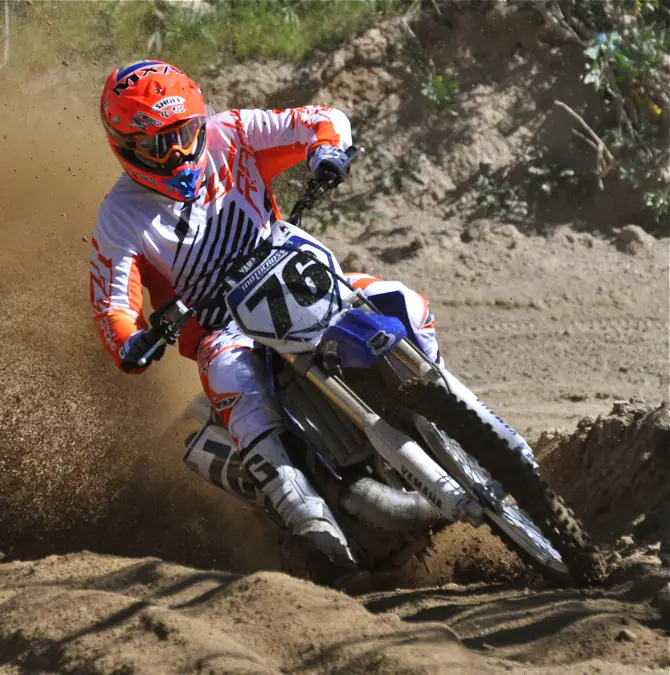
Q: FIRST AND FOREMOST, IS THE 2013 YAMAHA YZ250 BETTER THAN THE 2012 YZ250?
A: No. The last true-to-life YZ250 changes came back in 2011 when Yamaha switched to a single global spec. Boiled down to its basics, a 2006 YZ250 is a very close cousin to the 2013 model.
Q: WHAT IS A GLOBAL SPEC?
A: During the heyday of two-stroke development Yamaha made different YZ250s to better suit the distinctly different needs of Europe, America and Japan. In 2011, they decided that this national personalization was a waste of money and, as a result, changed the last three vestiges of their previous national spec program. First, the American bikes got a 75mm longer silencer than it had in 2010. This longer silencer was designed to meet Euro sound standards. Second, the compression ratio of the American bike was reduced from 10.9:1 to 10.6:1 (by increasing the volume of the combustion chamber by 0.5cc). The lower compression ratio was chosen to meet the widely varying quality of fuels available around the globe. Finally, Yamaha added a neutral ignition switch to retard the mapping when the bike was in neutral (to help beat international sound tests).
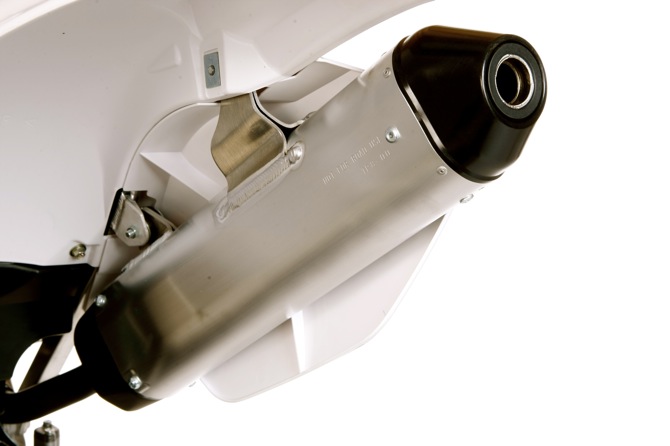
The global spec muffler is 75mm longer than the previous units.
Q: WHAT DID YAMAHA CHANGE FOR 2013?
A: Globally speaking, nada, nicht, wala, nothing.
Q: HOW CAN YAMAHA GET AWAY WITH ZERO R&D ON THE YZ250?

A: There are four schools of thought on this.
(1) Be thankful for what you get. Didn't your mother ever to tell you not to look a gift horse in the mouth? Well, if she didn't MXA is pretty sure than your friendly local Yamaha dealer will gladly fill in for her. Since Kawasaki, Suzuki and Honda dropped two-strokes six years ago, YZ250 buyers should be thankful that Yamaha didn't join them.
(2) What mean 'um no R&D? Although we might glibly say that the Yamaha YZ250 hasn't been significantly changed since 2006, Yamaha's engineers would beg to differ. They will point to the titanium shock spring (which KTM, Honda, Kawasaki, Suzuki or even the Yamaha four-strokes cannot claim). And all of the parts that Yamaha transplanted from the four-stroke line?including oversize bars, downsized brake calipers, wave-style rotors, removable bar mounts, aluminum brake cable clamp and new triple clamps.
(3) Poverty is a good alibi in hard times. Yamaha's marketing men are quick to point out that research & development is very expensive and in hard times, which the motorcycle manufacturers have suffered through since 2008, the R&D dollars have to be metered out where there is the biggest return on investment. And, two-strokes are way down on the pecking order (based on sales).
(4) If you don't like it, buy it from our competition. With only Yamaha and KTM making quantities of 250cc two-stroke motocross bikes, Yamaha can afford to be cavalier in dealing with its two-stroke customers. How so? If the buyers don't like the snail's pace of progress on the YZ250, they can buy a two-stroke from someone else…except that Yamaha knows that KTM is the only other source from the Big Five. And, they rightly believe that their loyal customers will chose to buy a YZ250 with a seven-year-old design before going orange.
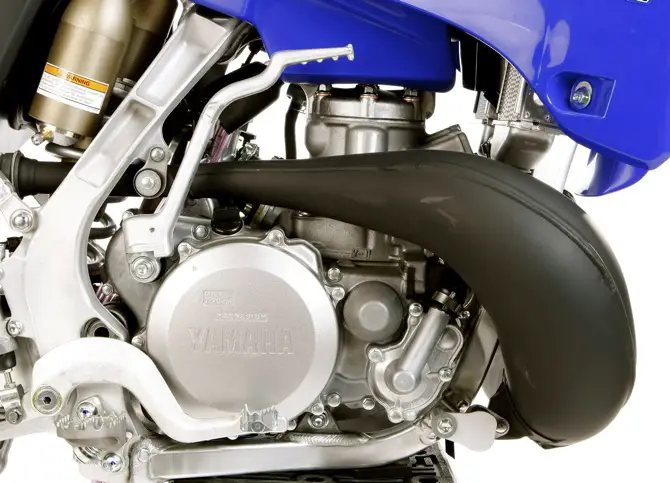
Q: WHAT ABOUT HUSQVARNA, TM, BETA AND GAS GAS TWO-STROKES?
A: If disgruntled YZ250 consumers poured into the TM, Husqvarna, Beta and Gas Gas dealership and bought every 250cc two-stroke available, it wouldn't amount to "a hill of beans in this crazy world." First, of the four boutique brands named, only TM makes a 250cc motocross two-stroke, the rest are enduroized versions. Second, Yamaha isn't in competition with the little brands because the numbers don't meet their economy of scale. It wouldn't feasible for Yamaha to fire up its production line for the combined sales of these four marques. Third, do you live anywhere near a TM dealer? Didn't think so (and Yamaha doesn't think so either).
Q: WHAT ARE THE RETAIL PRICES OF THE AVAILABLE 2013 TWO-STROKES?
A: The 2013 Yamaha YZ250 retails for $7150. The KTM 250SX price is $7099. The TM 250MX costs $8300. The Gas Gas 250XC suggested retail is $8299. The Beta 250RR-2T is $7999.
Obviously the prices are subject to whatever deal you can make at the local level, but be forewarned that the fly in the ointment of all of these bikes is that they sell out fast?not necessarily because there is an overwhelming demand for them, but because the production numbers are low. Thus, demand always exceeds supply. Which is why the price of used YZ250s, from 2006 through 2012, has held fairly steady compared to other used bikes. Since a 2006 YZ250 is a very close relative of the 2013 YZ250?it is a seller's market.
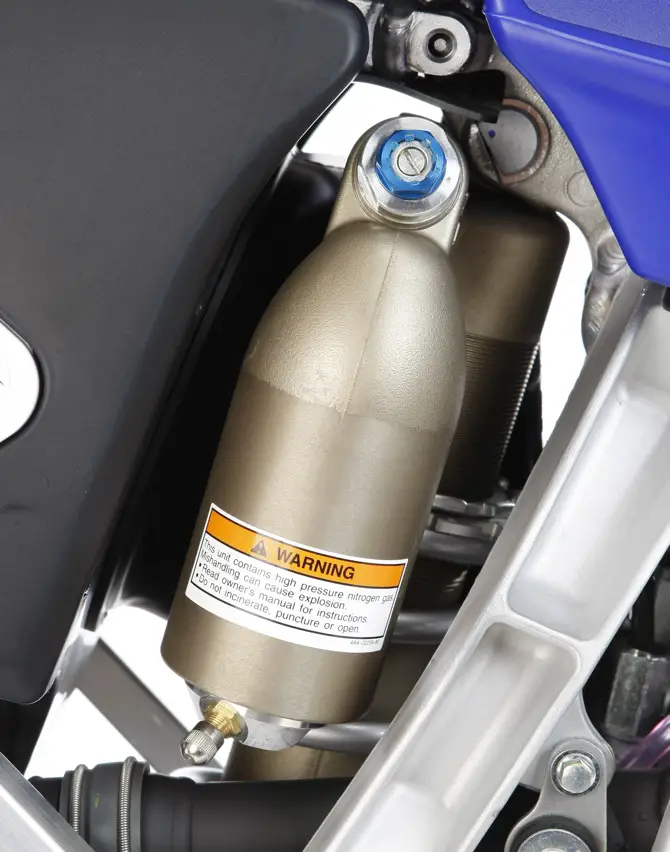
Q: HOW DOES THE 2013 YAMAHA YZ250 COMPARE TO THE 2013 KTM 250SX?
A: We are making the logical leap that the vast majority of two-stroke buyers will choose between the 2013 YZ250 or the 2013 KTM 250SX. Which leads to the obvious question about which bike is better?Yamaha or KTM? Here are the winners and losers in the two-bike showdown.
Horsepower? KTM. On the dyno, the stock 2013 KTM pumps out 49.77 horsepower, while the YZ250 peaks at 47.10. That 2.67 horsepower difference is noticeable from the saddle.
Handling? KTM. A few years ago every MXA test rider would have chosen the YZ250 to take the handling cake?no more. The Austrians have finessed the KTM 's chromoly chassis to the nth degree. The Katoom handles better than the YZ.
Weight? KTM. Both the 250SX and YZ250 are very light compared to the four-strokes they race against at 216 and 218 pounds respectively, the scales favor the orange bike.
Suspension? Yamaha. The YZ250 comes with Kayaba SSS (Speed Sensitive System) suspension and it is the best in the biz. The KTM's WP forks and shock are light on mid-speed compression and rebound damping.
Brakes? KTM. There isn't a Japanese-made bike that can compete with the 260mm Brembo front brake on the KTM.
Clutch? KTM. Yamaha's clutch is workmanlike, but it is a weak sister when compared to KTM's Belleville washer-equipped, hydraulic-actuated, Damped Diaphragm Steel (DDS) clutch.
Cosmetics? KTM. It is hard to tell the 2013 KTM 250SX apart from its 2013 250SXF, 350SXF and 450SXF brethren?it looks modern because it is modern. On the other hand, the YZ250 plastic and design share nothing in common with the latest generation Yamaha four-strokes.
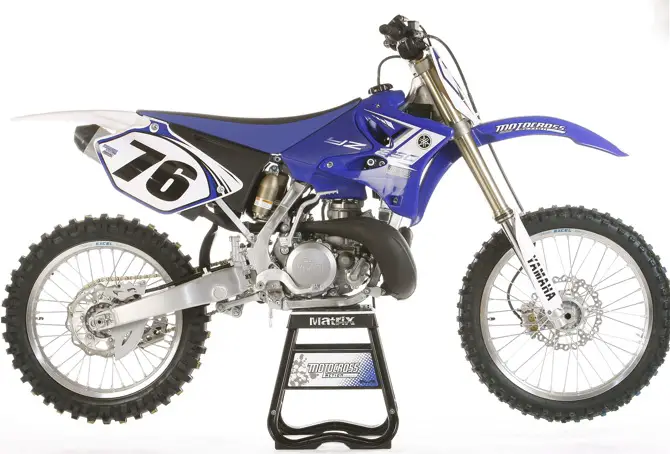
Q: CAN YOU MAKE THE 2013 YAMAHA YZ250 AS GOOD AS THE 2013 KTM 250SX?
A: Yes, but be prepared to spent some late nights in the garage working on it (and some early mornings with your newspaper route to pay for the updates). Here are the seven areas that we focus on.
(1) Exhaust pipe. You can gain two horsepower with an FMF or Pro Circuit pipe. Although you might think that this will help close the gap to the more powerful KTM 250SX, that is only true if the KTM rider doesn't install an FMF or Pro Circuit pipe.
(2) Reeds. As a rule of thumb, MXA test riders who like more midrange choose Moto Tassinari reeds and those looking for more top-end go with Boyesen. A simple mod is to remove the 5mm spacer in front of the reed block for more top-end power.
(3) Gearing. Every MXA test rider adds one tooth to the YZ250's rear sprocket. The goal is to gear it down to get to third gear sooner. The lower gearing makes the bike accelerate quicker.
(4) Jetting. Although the YZ250 is finely jetted for its box-stock configuration, if you port it, raise the compression, add an aftermarket exhaust or try to skimp on fuel quality it will ping. Play it safe and go rich.
(5) Front brake. Drop kick the stock front rotor and go over-size?260mm is nice and 270mm is better.
(6) Clutch: We run stiffer clutch springs. Our basic setup is to install three aftermarket YZ450F clutch springs to get better bite.
(7) Flywheel weight: Although local hotshots will tell you that flywheel weights are for enduro riders, virtually every factory Yamaha YZ250 rider ran a flywheel weight on his works bike. We run a 9-ounce Steahly weight, but Steahly will make you a lighter weight also.
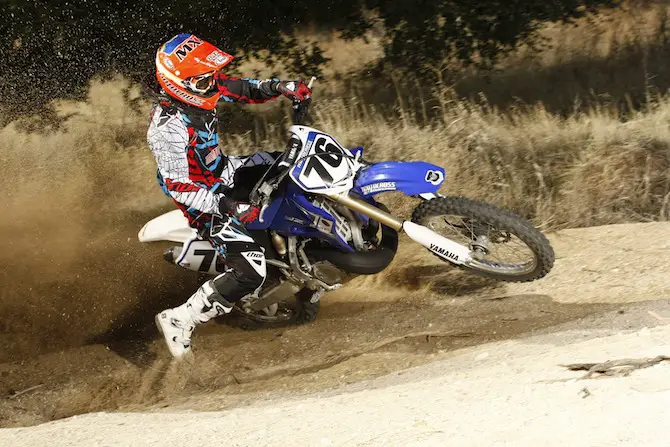
Q: WHAT DID WE HATE?
A: The hate list:
(1) Looks. UFO makes a complete plastics kit for the YZ250 that makes it look identical to the 2013 YZ250F. Surprisingly, even though the MXA wrecking crew doesn't like the "edge styling" of the YZ250F, we still installed the UFO kit because to do otherwise is to embrace the ethos of 2006. We don't do that with cell phones, computers, music, cameras or any other high-tech toys.
Q: WHAT DID WE LIKE?
A: The like list:
(1) Garage mechanic. Anybody with a nut cracker and a butter knife could rebuild the top-end on a YZ250 two-stroke. Not everybody has the tools, know-how or enthusiasm to rebuild a four-stroke.
(2) Suspension. You gotta love Yamaha's SSS suspension?it is almost perfect right off the showroom floor.
(3) Parts. Even if the YZ250 parts cost the same as their four-stroke nephews (which they don't), there are a lot less of them to buy. The MXA wrecking crew doesn't believe that two-strokes are more reliable than four-strokes?only that when unreliability rears its ugly head, a two-stroke owner spends less dough on pistons, rings and gaskets…and can put them in himself.
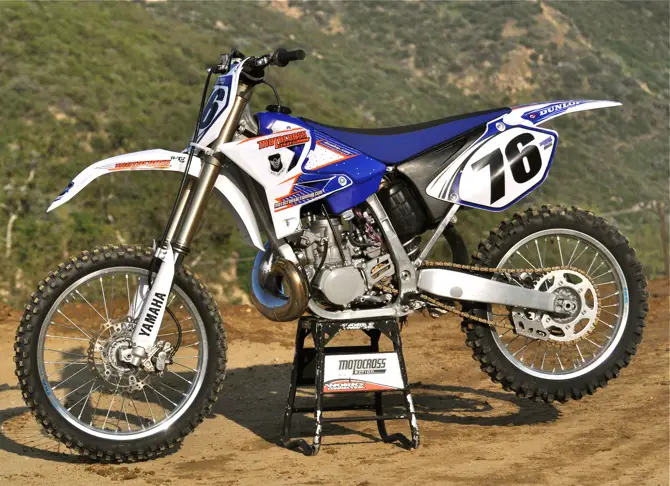
This is what MXA's YZ250 looked like with just the addition of UFO radiator wings and a front fender. We think that Yamaha could at least do as much as we did to make the bike look more modern.
Q: WHAT DO WE REALLY THINK?
A: Do we think that the KTM 250SX is better race bike than the YZ250? Yes. The KTM has been constantly updated, R&D money has been spent on it and whatever KTM learned from its four-stroke development they passed on to their two-strokes. All that said, we would have no qualms about racing a 2013 Yamaha YZ250. Not flashy, not modern?but workmanlike.
MXA'S 2013 YAMAHA YZ250 SETUP SPECS
This is how we set our Yamaha YZ250 up for racing. We offer it as a guide to help you find your own sweet spot.
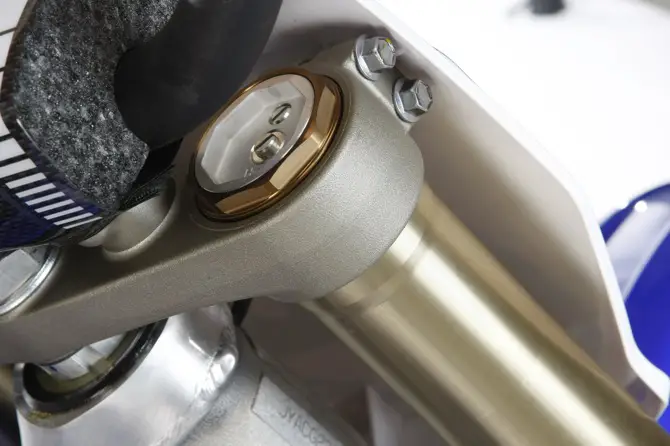
KAYABA SSS FORK SETTINGS
For hardcore racing we ran this setup on the 2013 Yamaha YZ250 (stock clickers are in parentheses):
Spring rate: 0.43 kg/mm
Oil height: 330cc
Compression: 13 clicks out
Rebound: 14 clicks out
Fork leg height: 5mm up
Notes: These are awesome forks, made all that more terrific by the light feel and snappy input of the two-stroke engine. Obviously if you are fast or fat, you might want to go stiffer on the fork springs. but typically fast riders can dial in more compression and add 10cc of fork oil to each leg (and use the crossover effect of rebound damping to get the stock fork springs to work).
KAYABA SSS SHOCK SETTINGS
For hardcore racing we ran this setup on the 2013 Yamaha YZ250 (stock clickers are in parentheses):
Spring rate: 4.9 kg/mm
Race sag: 100mm
Hi-compression: 1-3/4 turns out (1-1/2 stock)
Lo-compression: 8 clicks out (13 stock)
Rebound: 8 clicks out (12 stock)
Notes: The one thing that the KTM 250SX can't touch on the YZ250 on is its suspension. Compared to what comes on the 250SX, the YZ250 has a works shock. It has a jumbo-sized 18mm shock shaft, Kashima-coated internals and SSS damping. AMA National-speed riders and heavyweight contender will need to move up to a 5.0 kg/mm spring. The YZ250 no longer comes with titanium shock spring, although the YZ125 still does.
YAMAHA YZ250 JETTING
Here are MXA's recommended jetting specs (when changed, stock specs are in parentheses):
Main Jet: 178
Pilot Jet: 50
Needle: N3EW
Clip: 2nd from top
Air screw: 1 turn stock
Notes: The 2013 YZ250 jetting is on the edge?albeit the good side of the edge. Although if you hop the YZ250 up or add an aftermarket exhaust pipe, you will need to go to a bigger 180 or 182 main jet. Other than that the YZ250 jetting is basic, simple and effective. The air screw is very sensitive from 1/2 turn to 1 turn out.

Source: https://motocrossactionmag.com/mxas-2013-yamaha-yz250-two-stroke-motocross-test-if-you-added-used-yz250-sales-to-new-bikes-sales-this-would-be-the-biggest-selling-bike-of-2013/







Tidak ada komentar:
Posting Komentar